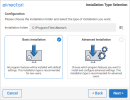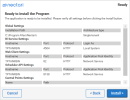Installing the Nectari Server (Basic)
This topic describes the steps to install the Nectari Server using the basic installation type. This installation type has fewer steps and is recommended for a simple architecture (single server or dedicated BI server). The server is installed with all its components (Application, Scheduler API, Distribution Worker and OLAP Worker). Nectari is installed in single-tenant mode by default.
To perform the basic installation:
-
Run the Nectari Server - Win64.exe on the server and click Next.
NoteYou might get a screen prompting you to install certain prerequisites if they are not already installed on the server. Click Install and they will be installed automatically.
-
In the Welcome screen, select the desired language for the installation and click Next.
-
In the License Agreement screen, read the end user license agreement and click I Agree.
-
In the Installation Type Selection screen:
-
Enter or browse for the installation path.
-
Keep the default choice of basic installation.
-
Click Next.
-
-
In the BI Service Setup screen:
-
Select the protocol.
-
If you select HTTPS, make sure that a certificate is already installed on the machine for this kind of IIS website.
-
Otherwise, select HTTP.
-
-
Enter the host name.
-
Enter the port for the URL hosting the BI Service. The default port is 4504.
ImportantEnsure that the default port (4504) is not already being used by another website or application.
-
Select the type of account to connect to this Windows service:
-
If you select Custom Account, enter the user name and the password of an existing user on the machine.
NoteIdeally, you should select a Windows user account whose password will not expire often (if at all), to avoid the service failing because the user credentials used to run it are expired. If you intend to use the Distribution Service to save the result of Views as files on the network, make sure that the Windows account entered at this step has the proper read/write access to the network locations where you decided to save the files.
-
If no users can be provided, select Local System.
-
-
Click Next.
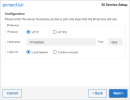
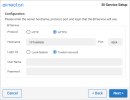
-
-
In the Web Client Setup screen:
-
Select the protocol.
-
If you select HTTPS, make sure that a certificate is already installed on the machine for this kind of IIS website. Select the certificate from the drop-down list.
-
Otherwise, select HTTP.
-
-
Enter the host name.
-
Enter the port. The default port is 81.
-
Select the type of account for the IIS application pool:
-
If you select Custom Account, enter the user name and the password of an existing user on the machine.
-
If no users can be provided, select Network Service.
-
-
Click Next.
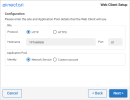
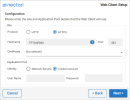
-
-
In the Scheduler API Setup screen, repeat the steps mentioned previously for the Web Client Setup screen.

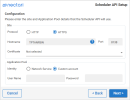
-
In the Central Point Setup screen:
-
Enter the name for the Central Point.
-
Enter or browse for the Central Point path. Make sure that the given path is a real path to a central point (if it is the case, it should contain a nec-centralpoint.xml file).
NoteAn unlimited number of Central Points can be added to the list of central points. Click + to add more Central Points.
-
Click Next.
-
-
In the Ready screen, make sure that all the parameters are correct for the installation and click Install.
-
In the Installation screen, wait for Nectari to be installed and ready for use. This may take a few minutes.
-
When the installation is completed, the Setup screen is displayed with a confirmation message.
-
Click Exit to close the installation wizard.
-
Click Browse Nectari to open the application.
-
Click Save logs to save and view the logs if the installation was unsuccessful.
-

